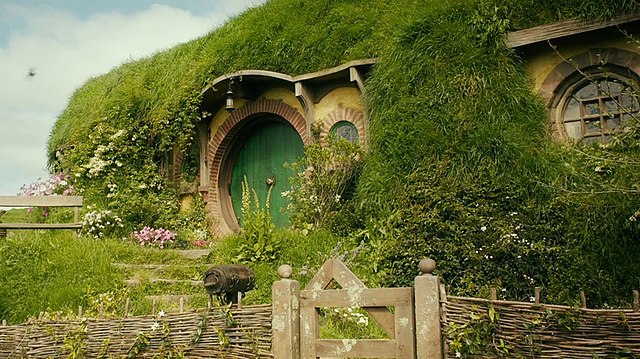Rivendell is a valley in J. R. R. Tolkien's fictional world of Middle-earth, representing both a homely place of sanctuary and a magical Elvish otherworld. It is an important location in The Hobbit and The Lord of the Rings, being the place where the quest to destroy the One Ring began.
J. R. R. Tolkien's 1937 painting of Rivendell
Tolkien based Rivendell on his 1911 visit to the Lauterbrunnental in Switzerland.
Rivendell has been compared to the Celtic Otherworld, here in a 1910 illustration by Stephen Reid
In Peter Jackson's 2001 film The Fellowship of the Ring, Rivendell is romantically conceived, with sophisticated culture. The "post-Ruskinian" style does not match Tolkien's own illustrations. Some have claimed it represented his dislike of industrialised manufacture.
Middle-earth is the setting of much of the English writer J. R. R. Tolkien's fantasy. The term is equivalent to the Miðgarðr of Norse mythology and Middangeard in Old English works, including Beowulf. Middle-earth is the human-inhabited world, that is, the central continent of the Earth, in Tolkien's imagined mythological past. Tolkien's most widely read works, The Hobbit and The Lord of the Rings, are set entirely in Middle-earth. "Middle-earth" has also become a short-hand term for Tolkien's legendarium, his large body of fantasy writings, and for the entirety of his fictional world.
A detail of Middle-earth in one of Peter Jackson's film sets
Medieval Christian cosmology: heaven above, earth in the middle, hell below. Vank Cathedral, Isfahan.






